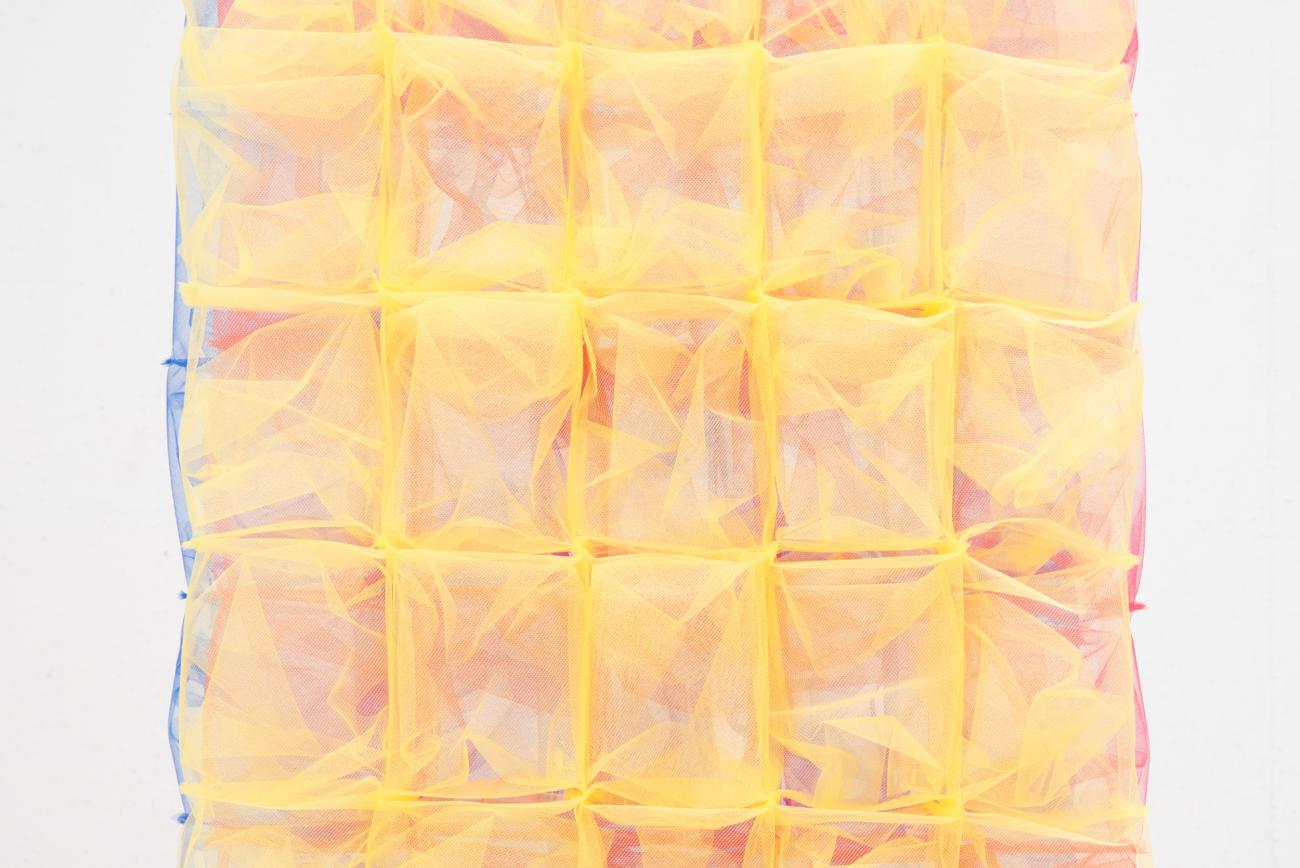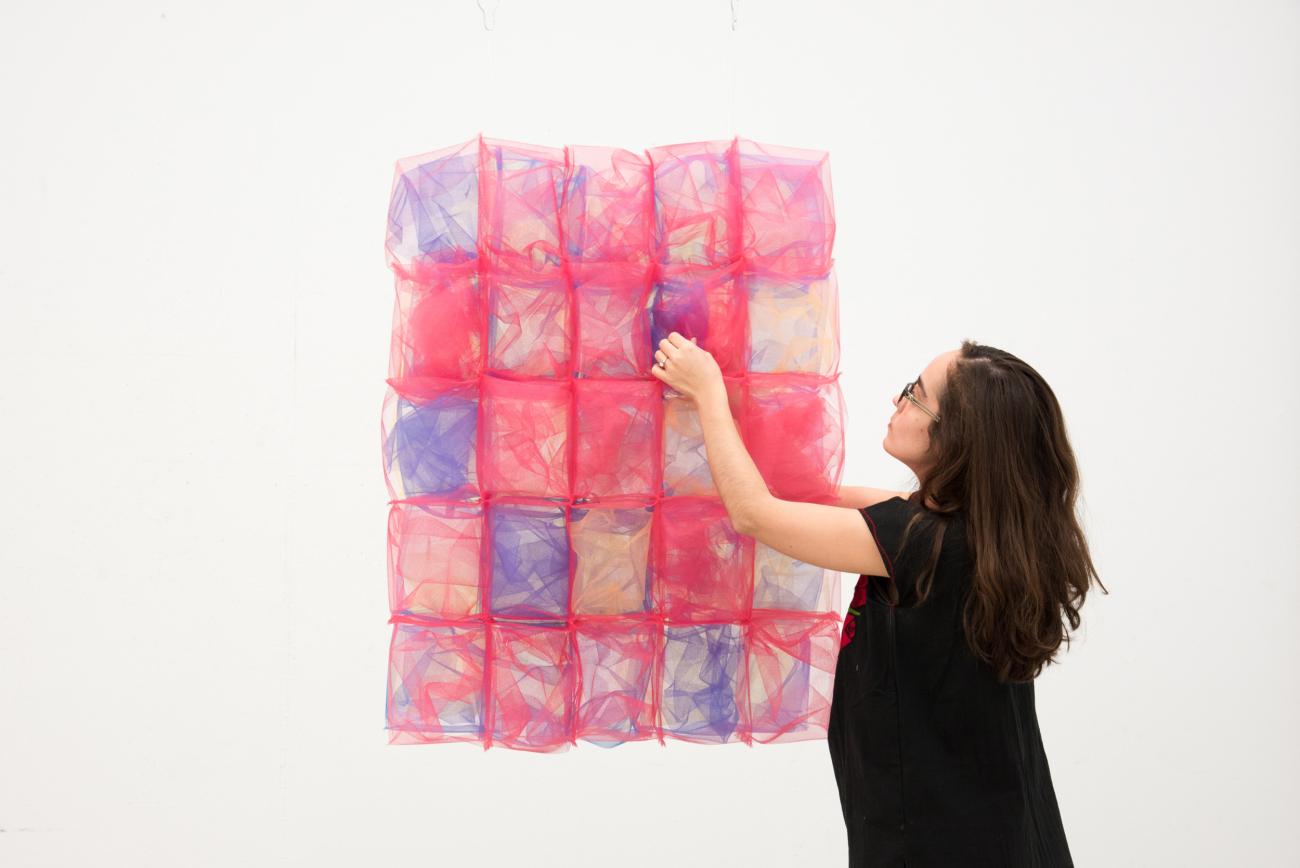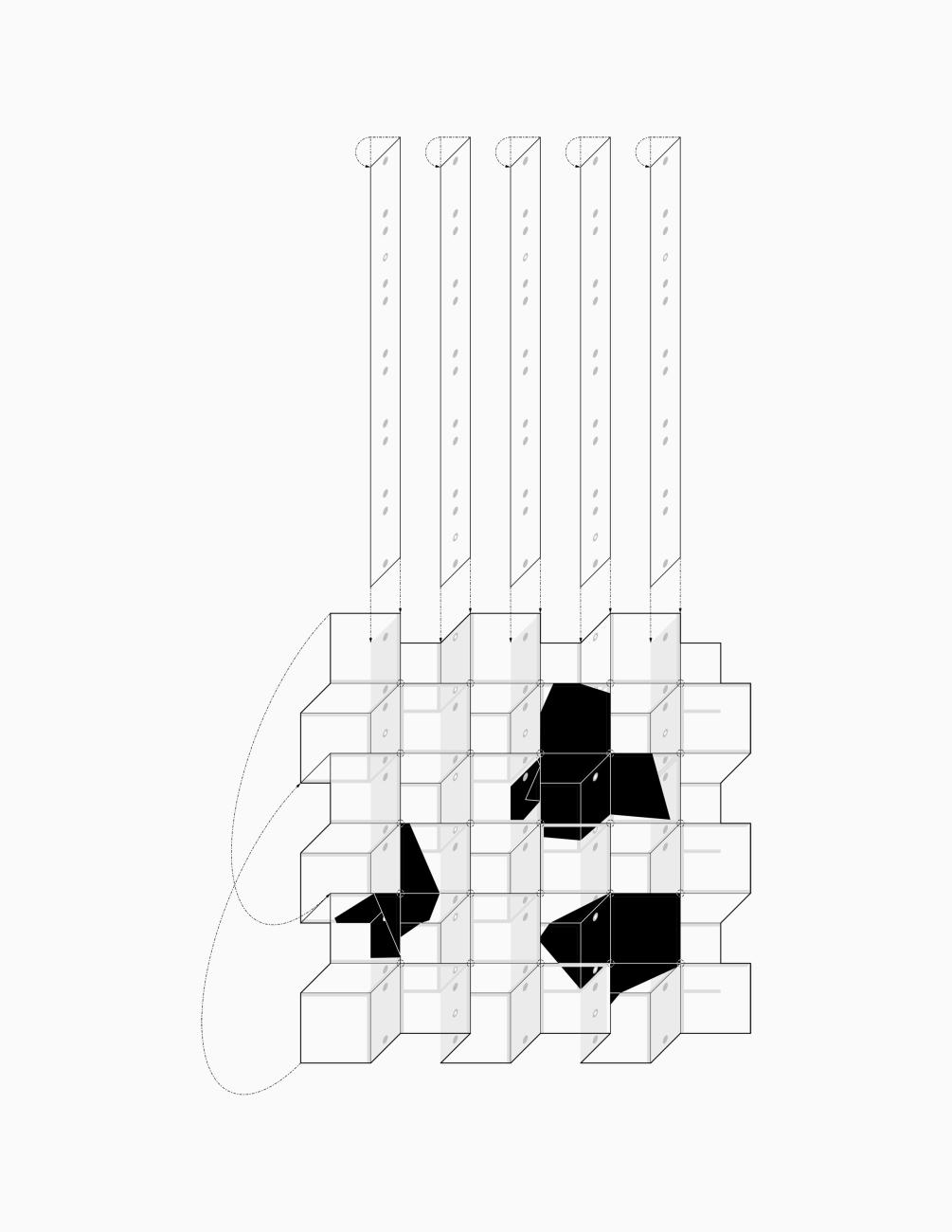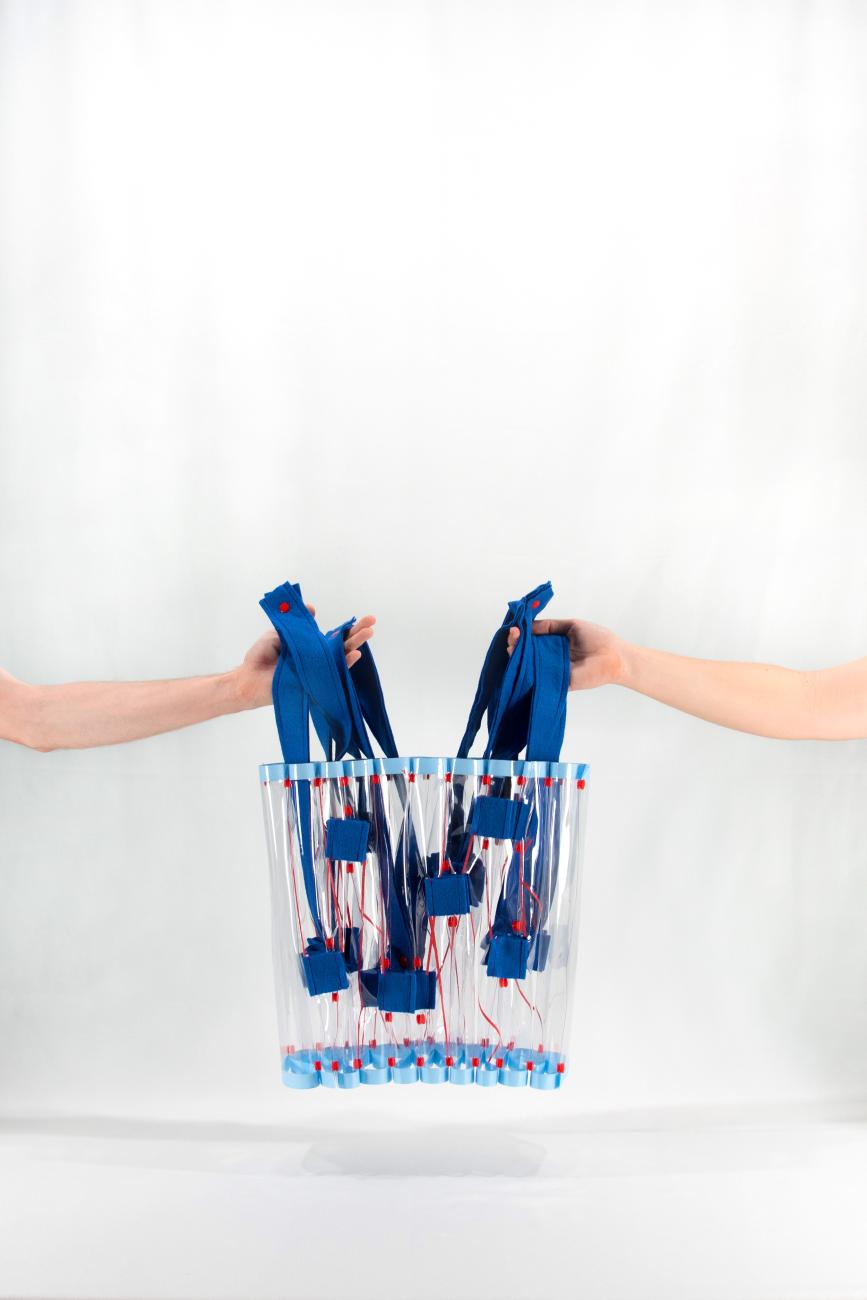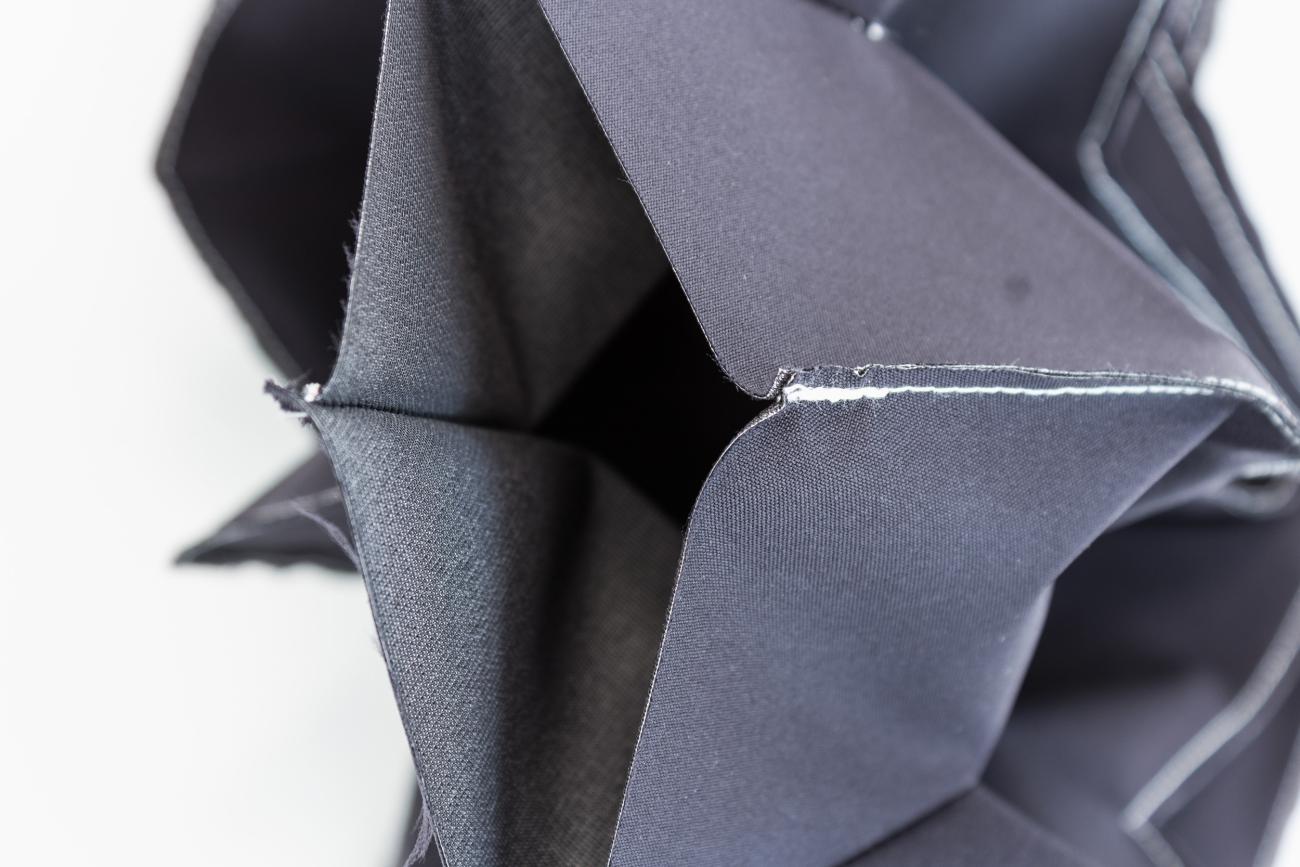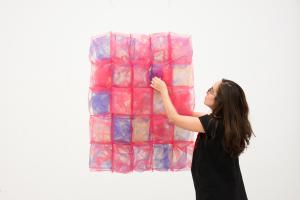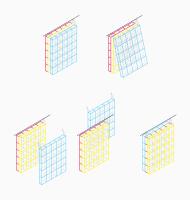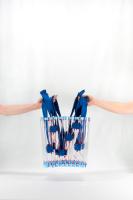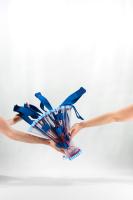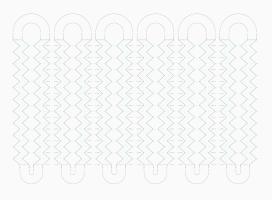Pliable
Pliable is an advanced research studio that investigates two-dimensional graphic surfaces as active, primary organizing elements in the development and understanding of architectural form. Students design and construct three full-scale fabric objects: (1) Mat, (2) Bag, and (3) Hanger. Each object focuses structural, programmatic, environmental, and representational design criteria for extreme effect; and are valued as models for architectural speculation as well as for their immediacy at full-scale.
One week of travel to Tokyo, Japan exposes students to a broader context of textile, graphic, and product-design culture, including tours of textile factories. Textile processes operate almost exclusively with flat patterns and surfaces to generate form — and the translation from 2d to 3d occurs with very little mediation. When coupled with fabric construction, and in particular stitching and seaming techniques, two-dimensional graphics have the capacity to both express (aesthetics) and organize (materially interact). Students critically question and speculate on the potential influences that a flat surface logic (pattern, color, seams, stitches, etc.) has on exterior representation, interior organization, structure and use in architecture.
Studio research focuses on the design and physical production of full-scale objects that investigate two-dimensional (flat, fabric) surfaces as active, primary organizing elements in the development and understanding of architectural form. The fabric objects include a Mat, Bag, Hanger, and Pop–Up. Design criteria is specific and unique to each object — deliberately focusing structural, programmatic, environmental, and representational conditions for extreme effect.


